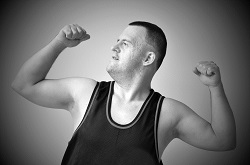Support for individuals with intellectual disabilities to overcome barriers to physical exercise
Physical activity interventions for individuals with IDs have to date returned poor results. Focused mainly on behavioural and organisational aspects, associated studies have not allowed for physiological aspects such as cardiorespiratory capacity or energy cost of activities, or they were assumed to be similar to the general population. Yet, research with small samples of this population, mostly in people with Down syndrome, has demonstrated abnormalities in the autonomic response to exercise and higher energy cost of activities. The ID PHYSIOLOGY project therefore investigated physiological barriers that influence physical activity and exercise in people with IDs. More knowledge on these barriers is needed to better help this population avoid fatigue, injury and lack of motivation, which in turn lead to loss of functioning and health conditions. ‘The wider implications of this project can affect public health issues and societal and economic aspects of this specific population,’ notes Dr Thessa Hilgenkamp, a human movement scientist and fellow on the project. Individuals with ID respond differently to exercise Research used various sympatho-excitatory tasks (e.g. grip strength exercise and aerobic exercise) to study the autonomic cardiorespiratory response of people with IDs. The team also measured oxygen uptake at different walking speeds to determine if there was a correlation between the relative demand of walking and individual level of physical activity. Analyses during a maximal exercise test compared an initial sample of 10 participants with IDs to a control group revealed significant differences in maximal heart rate and oxygen uptake. ID PHYSIOLOGY further found significant differences in the systolic blood pressure and heart rate response to changes in body position from supine baseline to standing (active orthostasis) to supine recovery. The project’s overall key finding is that ID individuals do have physiological barriers to being physically active. ‘Their heart rate cannot increase as much as in the control group, resulting in a decreased exercise capacity, and a higher relative energy expenditure during everyday tasks, such as walking,’ explains Dr Hilgenkamp. A personalised approach to physical activity Insights gained from the research and findings highlight the need to adapt guidelines for this population with regard to both testing and prescriptions for exercise. Action is also needed to increase awareness among professionals and the general public about ID individuals’ physiologically limited ability to exercise. ‘By understanding what the cause of the lower physical activity levels in individuals with ID is, and to what extent these are impacted by physiological barriers, physical activity programming can be further personalised and adapted to their needs and possibilities,’ states Dr Hilgenkamp. Preliminary results have been presented at three different conferences – one in Australia and two in the United States. Other dissemination activities include meetings and talks with healthcare professionals involved with the clinical practice of ID care as well as care providers, parents and personnel at sports clubs. The Marie Curie project has also been presented at the Department of General Practice Erasmus MC University Medical Center and Department of Rehabilitation Erasmus MC University Medical Center. Supervision of bachelors and master’s students at this institute and Radboud University Medical Center Nijmegen in the Netherlands was also part of the ID PHYSIOLOGY remit. ‘This project will continue to build on the knowledge base of autonomic dysfunction in individuals with ID, and how to better apply this knowledge to support an active lifestyle in this population,’ concludes Dr Hilgenkamp. As such, ID PHYSIOLOGY findings can help contribute to improved quality of life for people with IDs as well as their carers.



